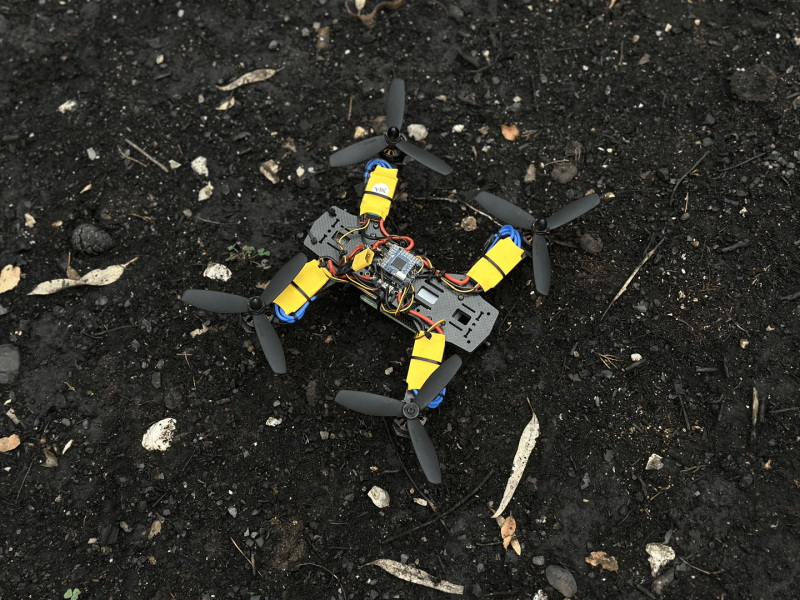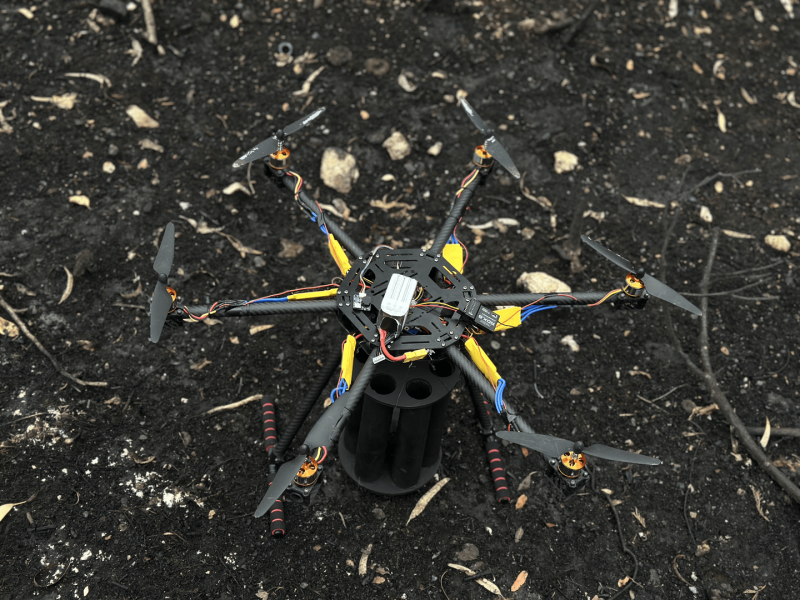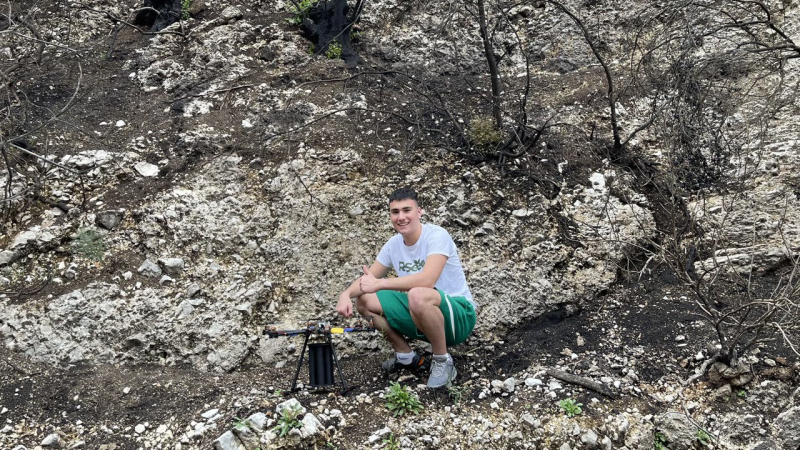Contents
A new generation of Greek innovators is using drones and data to restore nature — one seed at a time through drone-added reforestation.
Every summer, forests around the world are destroyed by fires. Traditionally, reseeding is labour-intensive, slow, and often limited in access due to steep slopes and the remote nature of fire-affected zones.
But now a not-for-profit startup spun out of a high school project is united by a shared mission to rebuild Greece’s forests and restore its native flora. ReSeed is a sustainability-focused startup that uses drones to reforest burnt areas by deploying seed bombs.
The startup uses advanced drone technology to map terrain, identify optimal planting zones, and deploy seeds in areas that are often inaccessible or unsafe for manual planting. It aims to make reforestation faster, scalable, and more effective through technology.
From a school project to a reforestation mission
ReSeed was founded by two high school students, Alex Leontaridis and Dimitris Orfanidis. There’s a whole team behind ReSeed, mostly other high school students. I spoke to Leontaridis to find out more. Alex Leontaridis is a senior high school student at Dodonea Lyceum in Ioannina.
As well as co-founding ReSeed, Leontaridis serves as a Research Assistant at Stanford’s Venture Capital Initiative and Developer at RevisionDojo (YC F24).
According to Leontaridis, “the idea for ReSeed came from a major problem in Greece — wildfires.
“Since 2018, devastating fires have occurred every summer in Greece. When my team and I volunteered in reforestation efforts, we realised the process was expensive, slow, and required a lot of people.
So, we started thinking about how we could reforest burned areas using drones. ”
Planting smarter, faster, and safer
Before ReSeed, replanting in Greece was a manual process, with trees planted by hand. ReSeed uses advanced satellite imagery and AI analysis to identify areas most in need of ecological restoration. The team designed small seed pods containing different native seeds that can be dropped from drones and built their own drones from scratch.
According to Leontaridis, “they’re custom hexacopters — six motors — and we designed a mechanism that stores and releases the seed pods during flights based on pre-programmed GPS applications. “
The drones enable planting up to one tree per second with optimal spacing and depth.

Image: The Re-Seed drone analyses soil, vegetation and terrain.
Before each mission, the ReSeed Scout drone takes flight, using HD and multispectral cameras to analyse soil, vegetation, and terrain. Its data guides the main ReSeed drone to deploy seeds only where regrowth potential is highest — making RS-Iris the intelligent eyes of the operation.

Image: The ReSeed drone can deliver around 180 seed bombs per fill.
The ReSeed drone is the heavy-lift workhorse of the operation, built for power, precision, and autonomy. With a six-tube seed dispenser delivering around 180 seed bombs per fill, it combines high-thrust motors, long-endurance batteries, and smart flight controls to navigate tough terrain.
Guided by data from the scout drone, it deploys seeds with accuracy while monitoring conditions for safety and efficiency — the backbone of ReSeed’s scalable reforestation system.
Proof in the planting
To test their tech, ReSeed partnered with local universities and biologists to take samples from burned trees and soil, then tried to simulate the conditions in a lab.
“We wanted to predict the success rate of seed germination and tree growth as accurately as possible, based on both lab tests and existing academic research,” shared Leontaridis.
Significantly, the process proved much faster and more efficient than manual replanting, and the success rate was better than initially expected. A core part of ReSeed’s approach is transparency and verification. Each mission is tracked through data and imagery, enabling continuous assessment of impact—from initial seeding to long-term ecosystem regeneration.
Tracking seeds post-drop
Of course, rapid planting is not the end. Reforestation success depends on using the right local seeds, soil quality and regional climate.
ReSeed has a timeline for monitoring — after two weeks, four weeks, and then two months. Specialised teams visit the reforested areas to track growth, survival rates, and canopy expansion, and compare results with lab projections.
“We’re also exploring ways to integrate more technology — things like sensor-based solutions or aerial imaging to monitor progress remotely,” shared Leontaridis.
Drones for the bees
The startup is expanding its approach beyond forests, for example, to help replant flowers in areas where bee populations are declining. “That’s becoming a serious issue in Greece, too,” notes Leontaridis.
It recently launched ReSeed Bees to protect and rebuild pollinator habitats through drone-enabled reforestation and targeted planting.
Greece, known for its rich beekeeping tradition, is facing a sharp decline in bee populations due to pesticides, wildfires, climate change, and habitat loss — all of which threaten both biodiversity and food security. To address this, ReSeed Bees uses drones to plant native flowering species, herbs such as thyme, oregano, and sage, and trees that provide year-round shelter and nectar sources.
After planting, researchers observe flower density, bee population recovery, and pollination activity. The project not only supports the recovery of bee populations but also strengthens broader ecosystems and rural communities. Through education and engagement with schools, farmers, and local residents, ReSeed Bees fosters awareness of pollinator health and its crucial link to environmental resilience and sustainable agriculture.
A cheaper, smarter way to reforest Greece
Millions of euros are donated in Greece each year to reforestation after major fires. Leontaridis contends that their approach is “much cheaper than traditional methods, so we hope that over time, part of those funds can be redirected to support drone-based reforestation.”
For now, ReSeed is funded entirely through donations and wants to remain a non-governmental, nonprofit organisation.
“We believe that if we became a for-profit company, we’d lose part of our mission and identity.”
So far, ReSeed has planted over 13,600 trees and flowering plants, helping to restore 650,000 square metres of land and sequester around 27 tons of CO₂ — based on forest density and tree spacing estimates. ReSeed’s main goal for the 2025–2026 season is to scale up.
“Last year, we focused on prototyping and testing different seed types and deployment systems. This year, we aim to plant 15,000 trees,” shared Leontaridis.
“So far, we’ve planted between 2,000 and 3,000. The great thing about drone reforestation is how fast it is — in an hour, we can plant around a thousand seeds.
We’re also working to recruit more volunteers, improve our technology, and strengthen our fundraising base.”
When asked if they receive any school credit for their work, Alexandros Leontaridis said not yet — though he acknowledged it might help with his university applications, particularly in the US. Still, he emphasised that this wasn’t the motivation behind the project:
“We just saw a big problem and wanted to make an impact.”
Lead image: Re-Seed co-founder Alex Leontaridis.

